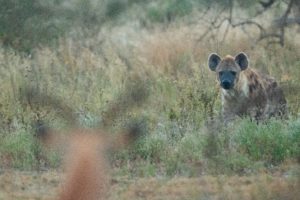The Convention on Biological Diversity (CBD) estimates up to US$440 billion is needed annually to meet commitments in the post-2020 UN Biodiversity Framework, yet the current annual spend budget is only US$52 billion. How do we fill this huge financial shortfall?
Biodiversity loss has become one of the most pressing environmental challenges. We seem to have reached a point of no return, after having wiped out 60 percent of mammals, birds, fish and reptiles since 1970s and half of the plants since the dawn of civilisation. Executive Secretary of the CBD, Cristiana Pasça Palmer, said just prior to COP14 in Egypt that we might only have two years left to set firm commitments for action on biodiversity loss if humanity is not to be “the first species to document its own extinction.”
The Fourteenth Meeting of the Conference of the Parties to the Convention on Biological Diversity (CBD COP14) kicked off the processes that will lead to adopting a post-2020 global biodiversity framework and update to the CBD’s Strategic Plan for Biodiversity. The New Deal for Nature is expected to be adopted during the fifteenth meeting in Beijing in 2020. The framework is regarded as a last call to address the underlying challenges of biodiversity and ecosystem loss. It represents an opportunity for decision-makers to join urgent efforts to transform approaches to use, safeguard, restore and invest in biodiversity.
Biodiversity losses profoundly affect agricultural productivity, food and other production-system resilience and dietary nutritional quality with negative consequences for producers, whose businesses can be profoundly affected by the poor quantity and quality of their yield. Instead, optimising and preserving agrobiodiversity represent nature-based solutions to address these challenges and translate into more reliable sourcing and stable production systems while also enhancing the nutrition of agricultural products and the sustainability of the farmers. We need a drastic change in consumers’ behaviour as well as serious government commitments to create an enabling environment and establish incentives for the many actors involved in the protection and management of ecosystems worldwide.

There is no doubt that the post-2020 framework will set new and ambitious targets to protect wild biodiversity such as insects, birds, plants and mammals that are vital for global food production, clean water, carbon sequestration and more besides. However, there are multiple aspects that are critical for the success in the implementation of the framework. In fact, success in achieving the new targets might fall short if proper agreed financing mechanisms are not put in place. The CBD estimates an annual global biodiversity financing need of between US$150–440 billion, while only 52 billion is spent annually on biodiversity management leaving a huge financing gap.
Decision-makers should learn from the challenges facing the Sustainable Development Goals to mobilize funding. The topic was prominent and reflected in the COP14 focus theme “Investing in Biodiversity for People and Planet.” Since the financial sector has been recognized as a key actor in sustainable development, through investments that combine financial returns and positive social and environmental impacts, new innovative forms of financing have (re-) emerged, such as Impact Investing, under the heading of sustainable finance in order to raise capital for sustainable development and biodiversity conservation. Impact Investing is not new to sector experts, as it mainly refers to financing mechanisms that would allow unlocking significant private investment capital to complement public resources and philanthropy to address pressing global challenges.
Editor’s Picks — Related Articles:
 “Association for Sustainable Development Alternatives: Protecting Biodiversity & Livelihoods”
“Association for Sustainable Development Alternatives: Protecting Biodiversity & Livelihoods”
 “Should Governments Support the Impact Economy?”
“Should Governments Support the Impact Economy?”
The Global Impact Investing Network (GIIN) defines Impact Investing as “investments made with the intention to generate positive, measurable social and environmental impact alongside a financial return,” even though the definition has not yet been globally agreed, the predominant approach focuses on two minimum requirements: a viable financial return and a significant measurable non-financial impact. Still, common metrics measuring both financial performance and social impact easy for companies to measure and meaningful to investors are still lacking in many fields and leaving investments’ results subject to “impact-washing” or “green-washing” risks.
For this reason, researchers are increasingly delivering metrics to compute the impact achieved through capital invested in projects or companies and to quantify the value of risks managed and costs avoided through biodiversity enhancement. Such metrics, like the Agrobiodiversity Index developed by Bioversity International, will help governments, companies and investors to assess risks and seize opportunities in food and agriculture by looking at the status of agrobiodiversity in a selected area, and assess whether their actions and commitments are contributing or not to its sustainable use.

In recent years organizations and initiatives working on solutions to combat climate change or biodiversity loss have proliferated, but with little effort to coordinate them, their work remains fragmented, with little impact on the ground. Indeed, all of this has not yet resulted in a major shift in finance flows toward biodiversity management. The private sector must play a more coordinated role in order to maximize its impact and ensure an effective response to society’s needs and expectations, and to help rebuild confidence in the farming and agriculture sectors. Businesses and the financial sector must align their roles with those of other actors, and the CBD needs to set key principles for investors and entry points for businesses to take action.
The expectation for the coming two years is that targets of the post-2020 framework that will be agreed on and adopted are underpinned by a worldwide political will to move beyond short-termism, market interest or political support, towards longer-term results. This should create a conducive environment among companies and the financial sector and hence support a system that invests in biodiversity rather than destroying it.











